Gameplay
The left and right direction keys move Furrball from one area of a room to another. The up direction key moves Furrball from one room to another and through Acme emergency exits. The X button activates and fires the bomb bat disablers. The triangle button stops using the bomb bat disabler. The circle button operates the mansion elevator (full power is required to enter). The square button activates control switches to gain power.
When activating control switches, random occurrences take place. If the icon switches to a clover, everything is fine. If the icon switches to Hamton's face, Hamton will be scared, preventing the player from using the elevator and the player must look for him. If the icon switches to a money bag the player will get a part of the code needed to operate the main generator. If the icon switches to a bomb bat, the player must quickly make their way to a disabler and use it before the bomb bats destroy the control switches. If the icon switches to the Baroness' face, the player must quickly make their way to an emergency Acme exit before she catches you. If the Baroness does capture the player, she will take them to the starting room. If a control switch is destroyed, it can be repaired by an angel bomb bat.
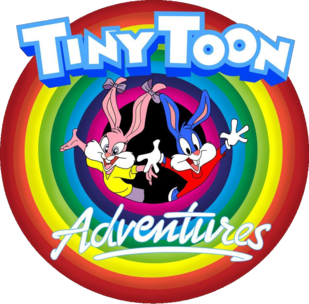
Tiny Toon Adventures is an American animated television series created by Tom Ruegger that was broadcast from September 14, 1990, to December 6, 1992. It was the first animated series produced by Steven Spielberg's Amblin Television in association with Warner Bros. Animation. The show follows the adventures of a group of young cartoon characters who attend Acme Looniversity to become the next generation of characters from the Looney Tunes series.

The Batcave is a subterranean location appearing in American comic books published by DC Comics. It is the headquarters of the superhero Batman, whose secret identity is Bruce Wayne and his partners, consisting of caves beneath his personal residence, Wayne Manor.

On trains, the expression emergency brake has several meanings:

Tiny Toon Adventures is a platform video game for the NES. It was developed and published by Konami and released in 1991. It is the first Tiny Toon Adventures video game to be released for a video game console.

Tiny Toon Adventures: Plucky's Big Adventure is the third Tiny Toon Adventures-based game, developed by Warthog, published by Conspiracy Games and released on the PlayStation in North America on September 21, 2001, and in Europe on the following month.
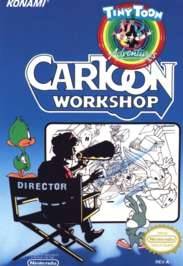
Tiny Toon Adventures: Cartoon Workshop is an educational entertainment video game for the Nintendo Entertainment System based on Tiny Toon Adventures. It was developed by Novotrade and released by Konami on August 17, 1992.

Tiny Toon Adventures 2: Trouble in Wackyland is a Tiny Toon Adventures-based video game, released on the Nintendo Entertainment System in 1993, and developed and published by Konami. The game was originally released in Japan as Tiny Toon Adventures 2: Montana Land e Yōkoso. The story involves Montana Max inviting everyone to a new amusement park in Acme Acres, under the alias of a "secret admirer".

A kill switch, also known more formally as an emergency brake, emergency stop (E-stop), emergency off (EMO), or emergency power off (EPO), is a safety mechanism used to shut off machinery in an emergency, when it cannot be shut down in the usual manner. Unlike a normal shut-down switch or shut-down procedure, which shuts down all systems in order and turns off the machine without damage, a kill switch is designed and configured to abort the operation as quickly as possible and to be operated simply and quickly. Kill switches are usually designed to be noticeable, even to an untrained operator or a bystander.

A fire alarm control panel (FACP), fire alarm control unit (FACU), fire indicator panel (FIP), or simply fire alarm panel is the controlling component of a fire alarm system. The panel receives information from devices designed to detect and report fires, monitors their operational integrity, and provides for automatic control of equipment, and transmission of information necessary to prepare the facility for fire based on a predetermined sequence. The panel may also supply electrical energy to operate any associated initiating device, notification appliance, control, transmitter, or relay. There are four basic types of panels: coded panels, conventional panels, addressable panels, and multiplex systems.
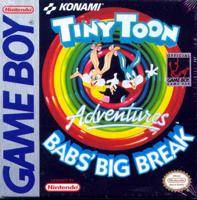
Tiny Toon Adventures: Babs' Big Break is the first Tiny Toon Adventures game released on the Nintendo Game Boy. It was released in 1992 and was developed and published by Konami.

Tiny Toon Adventures: Buster's Hidden Treasure is the first Tiny Toon Adventures-based game released on the Sega Genesis. It was released in 1993 and developed and published by Konami. The game was not released in Japan, but was released in South Korea, where it was simply called Tiny Toons Adventures.
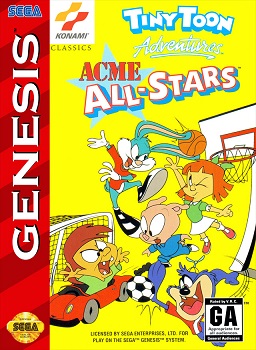
Tiny Toon Adventures: ACME All-Stars is a Tiny Toon Adventures-based sports video game released on the Sega Genesis video game console. The game was developed and published by Konami in 1994.

Tiny Toon Adventures: Wacky Stackers is the first Tiny Toon Adventures video game released on the Nintendo Game Boy Advance. It was released on December 30, 2001 and was developed by Warthog and published by Conspiracy Games. It is also the first puzzle-style game for the franchise. The game features several characters from the television series, including: Buster Bunny, Montana Max, Elmyra Duff, Furrball, Babs Bunny, Plucky Duck, Gogo Dodo and Dizzy Devil.

Transylvania 6-5000 (1963) is a Warner Bros. Merrie Melodies animated short directed by Chuck Jones. The short was released on November 30, 1963, and stars Bugs Bunny. It was the last original Bugs Bunny short Jones made for Warner Bros. Cartoons before Jones left for Metro-Goldwyn-Mayer to found his own studio, Sib Tower 12 Productions. It was his second-to-last cartoon at Warner Bros. before moving to MGM, and the second-to-last Warner cartoon in 1963.
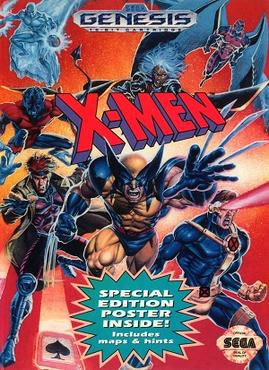
X-Men is a home console video game produced by Sega for Sega Genesis in 1993, based on the adventures of the Marvel Comics superhero team, the X-Men. One or two players can play as any of four pre-chosen X-Men. X-Men was released in 1993 and was followed up by X-Men 2: Clone Wars.

An elevator (North American English) or lift (British English) is a machine that vertically transports people or freight between levels. They are typically powered by electric motors that drive traction cables and counterweight systems such as a hoist, although some pump hydraulic fluid to raise a cylindrical piston like a jack.

Tinker, also known as Microsoft Tinker, is a puzzle video game developed by Fuel Industries in which the player controls a robot through various mazes and obstacle courses. It was originally released on September 23, 2008 as part of Windows Ultimate Extras, and contained 60 levels including a 20-level tutorial. A free map editor was also released, however it is not compatible with the Games for Windows – Live version of Tinker. It is only compatible with the Windows Ultimate Extras version.

Acme Animation Factory is an educational art and graphics video game released by Sunsoft in November 1994 for the Super Nintendo Entertainment System.

Tiny Toons Looniversity is an American animated slapstick comedy television series developed by Erin Gibson and Nate Cash for HBO Max. It serves as a reboot of Tiny Toon Adventures and features older versions of the characters in a new continuity. Two seasons were ordered to be produced by Amblin Television and Warner Bros. Animation. The first season was released on September 8, 2023 on HBO Max, followed by a televised premiere on Cartoon Network on September 9th.



















